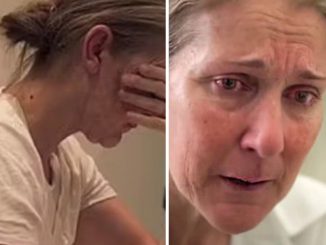Ever found yourself hesitating to ask a guest to remove their shoes, only to be told by someone, like your mother-in-law, that you’re being discourteous? You’re not alone! It’s a surprisingly polarizing topic that touches on cleanliness, cultural customs, and hosting etiquette. So, is it really rude to request this, or is it simply a matter of personal preference?
Understanding the Cultural Context of Shoe Removal

One of the biggest factors shaping opinions on this issue is culture. In many Asian and Scandinavian households, removing shoes is not just polite—it’s a must. It’s seen as a sign of respect and a way to keep homes clean and sacred. On the other hand, many Western cultures don’t place as much emphasis on this practice. Guests often keep their shoes on indoors, and requesting otherwise might be considered unusual.
Does this mean you shouldn’t ask guests to remove their shoes if it’s part of your household tradition? Absolutely not! The key is recognizing that cultural norms differ. Being aware of these differences can help you approach the topic in a way that’s both respectful and confident.
Health and Hygiene: The Case for Bare Floors
If you’ve ever looked at the bottom of a pair of shoes after a long day, you already know they’re not exactly clean. Shoes can track in dirt, bacteria, and allergens that could easily spread around your home. For families with small kids crawling on the floor or those with allergies, maintaining a shoe-free home can be a lifesaver.
Think about it: would you want the same shoes that trudged through public bathrooms or muddy sidewalks to stomp across your living room carpet? Probably not. Explaining this perspective to your guests can make your request feel less like an arbitrary rule and more like a thoughtful choice for the health of everyone in the household.
Does Hosting Etiquette Really Say No to Shoe Removal?
Traditional hosting etiquette often emphasizes guest comfort, suggesting that making guests feel at home should be your top priority. But modern etiquette acknowledges that it’s equally important to respect the host’s rules. After all, it’s your home, and you’re entitled to set boundaries.
The trick is finding a balance. Yes, you want your guests to feel comfortable, but you also want to feel comfortable in your own space. Asking guests to remove their shoes doesn’t have to be a big deal—it’s all about how you frame the request. Approach it with kindness, and most guests will happily comply.
Managing Family Dynamics: When Your Mother-in-Law Disagrees
Let’s face it: family dynamics can complicate even the simplest decisions. If your mother-in-law insists that asking guests to remove their shoes is “rude,” it can feel like you’re caught in the middle. So, how do you handle this without creating tension?
Start by having a calm conversation. Explain why this practice matters to you—whether it’s about cleanliness, cultural tradition, or personal preference. Acknowledge her perspective, but make it clear that this is a decision you’ve made for your home. Compromise can help here; for example, you could consider allowing exceptions for certain guests or occasions while sticking to your rule in everyday situations.
How to Politely Ask Guests to Remove Their Shoes
So, how do you actually ask someone to take their shoes off without sounding rude or awkward? It’s all about tone and preparation. Here are a few tips:
- Set the Tone Beforehand: If possible, let guests know about your shoe-free policy before they arrive. A simple mention in an invitation—like, “Feel free to bring comfy socks; we’re a shoe-free household!”—can go a long way.
- Provide Comfort: Make the transition easier by offering a designated shoe rack by the door and providing clean slippers or cozy socks for guests who might feel uncomfortable going barefoot.
- Use Polite Language: When guests arrive, frame the request as a preference rather than a demand. For example, “We usually ask everyone to leave their shoes at the door to keep things clean. Thanks so much!”
When you approach the topic with thoughtfulness, most people will appreciate your effort and won’t think twice about slipping off their shoes.
Balancing Tradition and Modern Practices
Incorporating traditions while respecting modern hosting practices can be a delicate dance. Traditional etiquette might emphasize catering to guests’ every need, but modern hosting often focuses on mutual respect and consideration. Striking the right balance means blending these approaches.
For instance, if you’re hosting a formal dinner party and you know some guests might find shoe removal awkward, consider making an exception for that event. But during casual gatherings or day-to-day visits, stick to your shoe-free rule. Flexibility shows thoughtfulness while still honoring your personal boundaries.
When Compromise Isn’t an Option
What if you have guests who outright refuse to take their shoes off, or your mother-in-law insists on overriding your rule? In these cases, it’s essential to stand your ground politely but firmly. Your home is your sanctuary, and maintaining its cleanliness and comfort is your right.

If someone disagrees, remind them that this isn’t about being “rude” or “discourteous.” It’s about creating an environment that works for your household. Offering alternatives—like slippers for those who prefer not to go barefoot—can help smooth over any discomfort.
Conclusion: Creating a Home That Reflects Your Values
Ultimately, asking guests to remove their shoes isn’t rude—it’s a reflection of your values and preferences. Whether you’re motivated by cleanliness, cultural tradition, or personal comfort, it’s entirely reasonable to expect guests to respect your house rules. The key is clear, kind communication and a willingness to accommodate others’ needs whenever possible.
At the end of the day, successful hosting isn’t about rigid adherence to etiquette or sacrificing your boundaries. It’s about creating an environment where both you and your guests feel respected and at ease. So, go ahead—ask politely, offer slippers, and enjoy a clean, happy home that truly feels like your own.
Sasha Obama’s boyfriend learned something important when their relationship started.

Sasha Obama and Clifton Powell Jr. seem to be getting serious in their relationship. They started dating in 2022 and have kept their romance private and mostly away from the public eye.
In an interview on the “Dear Fathers” podcast, Clifton Powell, the dad of Clifton Powell Jr., talked about his son’s relationship with Sasha Obama, the youngest daughter of Barack and Michelle Obama. He mentioned that they had been dating for a year before their relationship became public, which gave him a chance to teach his son important values.
Clifton Sr. said, “It has helped me talk to my son about how to treat Sasha Obama because we really like the Obamas. I need to make sure my son is responsible, kind, loving, and supportive.” He often reminds his son to be a gentleman and to take care of Sasha. He texts him regularly, saying, “Treat Sasha like you would want someone to treat your daughter.” This advice makes sense, especially since Clifton Jr. is dating someone so well-known.
Is Clifton and Sasha’s romance Obama-approved?

Dating a former first daughter can be tricky, but Clifton Powell Jr. seems to manage it well. It looks like he has the Obamas’ approval. In a 2022 interview with “Good Morning America,” Michelle Obama openly talked about her daughters’ dating lives.
Michelle Obama thinks it’s “wonderful” that Sasha and Malia Obama are exploring different relationships and looking for partners. She said, “I want them to know what they want and who they are in a relationship, and that takes trying out different people.” Barack is “good with it” too. Michelle added, “They’re in their 20s. They went to prom and have lived their lives.” She mentioned that Barack has learned to be a caring dad without being overprotective.
Clifton Powell Jr. also seems to have passed the “sister test.” Malia was seen spending time with him shortly after it became known that he was dating Sasha. The two were spotted walking and talking in a Los Angeles park, appearing relaxed despite the paparazzi nearby.
Is Clifton the one?

Before dating Clifton Powell Jr., Sasha Obama was rumored to be dating Matt Metzler. They sparked dating rumors in 2017 when they were seen kissing at the Lollapalooza Music Festival, but it was unclear if they were officially a couple. After that, Sasha started dating Powell Jr. in 2022, and they have been together ever since.
It looks like Sasha’s parents support her relationship. In a 2022 appearance on “The Ellen DeGeneres Show,” Michelle Obama talked openly about her daughter’s dating life, saying, “Now they are bringing home grown men. Before, it was just pop bands. Now they have boyfriends and real lives.”
As for whether Clifton Powell Jr. is the right match for Sasha Obama, it’s hard to say what the future will bring. However, it’s nice to see that they are enjoying their time together like any other young couple.



Leave a Reply